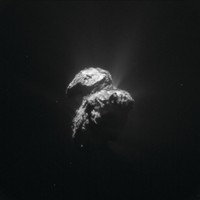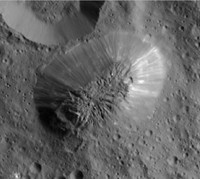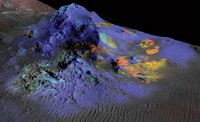Advertisement
Grab your lab coat. Let's get started
Welcome!
Welcome!
Create an account below to get 6 C&EN articles per month, receive newsletters and more - all free.
It seems this is your first time logging in online. Please enter the following information to continue.
As an ACS member you automatically get access to this site. All we need is few more details to create your reading experience.
Not you? Sign in with a different account.
Not you? Sign in with a different account.
ERROR 1
ERROR 1
ERROR 2
ERROR 2
ERROR 2
ERROR 2
ERROR 2
Password and Confirm password must match.
If you have an ACS member number, please enter it here so we can link this account to your membership. (optional)
ERROR 2
ACS values your privacy. By submitting your information, you are gaining access to C&EN and subscribing to our weekly newsletter. We use the information you provide to make your reading experience better, and we will never sell your data to third party members.
Physical Chemistry
Water ice sits below surface of dwarf planet Ceres
American Geophysical Union meeting highlights include these findings and the discovery of boron on Mars
by Elizabeth K. Wilson
December 16, 2016


The dwarf planet Ceres, which orbits in the asteroid belt between Mars and Jupiter, harbors large amounts of water ice just below its surface, scientists report (Science 2016, DOI: 10.1126/science.aah6765).
The ice, which is likely filling pores in subsurface rock, has been there for billions of years, confirming predictions made by astronomers 30 years ago.
Scientists reported these and other results gleaned from the National Aeronautics & Space Administration’s Dawn spacecraft, which is orbiting Ceres, at a Dec. 15 press conference at the American Geophysical Union meeting in San Francisco.
Dawn’s gamma ray and neutron spectrometer detected hydrogen, a proxy for water, just one meter below the dwarf planet’s surface. The ice is most concentrated at Ceres’s poles, said Thomas H. Prettyman of the Planetary Science Institute at the meeting.
Norbert Schörghofer, a Dawn mission scientist and astronomer at the University of Hawaii at Manoa, also reported at the conference that Dawn has found patches of water ice in permanently shadowed craters at Ceres’s poles—a phenomenon that also exists on Mercury and the moon (Nat. Astron. 2016, DOI: 10.1038/s41550-016-0007).
Collectively, many lines of evidence taken from Dawn indicate that Ceres once had a liquid subsurface ocean, some of which likely still remains, said Carol Raymond, deputy principal investigator for the Dawn mission, at the conference.
Scientists are particularly interested in solar system bodies that may contain liquid water, as they could be environments that would sustain life. Ceres, Raymond said, is likely similar to Europa, Jupiter’s moon, or Enceladus, Saturn’s moon, in terms of its potential for habitability.
Other research at the AGU meeting focused on a solar system body closer to home: Mars. Scientists from Los Alamos National Laboratory announced the first-ever discovery of boron on the surface of the red planet. NASA’s Curiosity rover identified the element in mineral veins of calcium sulfate. If this mineral is comparable to that found on Earth, the scientists said it would indicate that the planet’s surface temperatures were once 0–60 °C, and the soil had a neutral to alkaline pH—in other words, a very habitable environment.






Join the conversation
Contact the reporter
Submit a Letter to the Editor for publication
Engage with us on Twitter